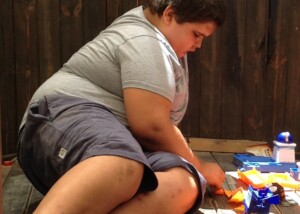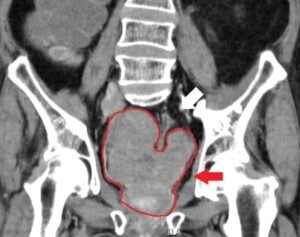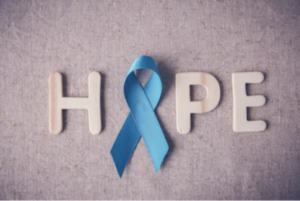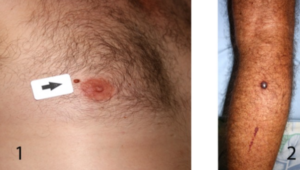It’s unbelievable how many parents won’t get their young autistic kids swimming lessons to prevent drowning.
A six-year-old boy died because he didn’t know how to stay afloat or paddle to the pool’s edge.
Young children with autism can learn to keep themselves afloat long enough for someone to jump into the water and save them.
At a major autism event recently I noticed two very young autistic boys safely connected to their dad by “leashes.” No, not dog leashes but plastic stretchable coils.
These can attach to a child’s wrist or, depending on style, waist. The other end attaches to the parent’s wrist or can be held in their hand.
Had the six-year-old, who was at a swimming pool party, been connected to his father this way, he either would not have been able to jump or fall (the news story has two versions) into the pool, or, if he somehow got in, his father would’ve instantly felt the tugging of the coil cord.
I hate to think that this protective method was avoided because his parents feared what the other adults there would think (“Your child’s not a dog!”).
But dog lovers leash their dogs because they love them and don’t want them running off into possible danger.
If parents thought of these cords as “connectors” rather than as “leashes,” the stigma would mostly dissolve.
But connections aside, why wasn’t this boy, and many other young kids with autism who end up drowning, enrolled in swimming lessons?
This boy’s parents KNEW he loved water; that’s what the news story says.
I’ve read many stories about autistic kids who drowned.
Typically, they secretly leave their house and end up dead in a local body of water such as a pond.
In the six-year-old boy’s case, one of the news outlets states: “Saturday at a kids pool party in Butler County, surrounded by more than 15 adults…”
Another news outlet says it was 17 adults. We don’t need to quibble about the precise number.
That’s because apparently, the boy was with a lot of adults.
One version says he jumped in the pool. Another said he fell in. Yet another says “he somehow got in the pool.”
I can easily imagine that amid all the conversations of many adults and loud vocals from all the kids, somehow this little boy got into the water unnoticed.
These types of tragedies can be prevented.
Autistic Child Loves Water, Can’t Swim: Limit Pool Party Guests
Why were so many people at this pool party? This dilutes the parents’ ability to keep a watchful eye on their autistic child.
We can deduce that all those adults were there to supervise their young children. That certainly makes plenty of sense.
But when you have an autistic child who can’t swim but who’s attracted to water – you shouldn’t have so many people over and instead, should focus on having a smaller gathering.
A large gathering will distract the parents from ensuring their child is safe.
However, there’s actually a way around that: a leash. Pictured below are three examples.



Embarrassment Over Leashing
These go by names such as harness and wrist chain. Yes, a harness would be noticeable, but the “Anti-Lost Wrist Chain” is discreet.
These devices will dramatically raise the odds of a favorable outcome, because if the child jumps in a pool, the parent will be tugged and possibly toppled into the water as well.
This will buy the parent precious time in preventing their child from drowning.
Often, when autistic kids get into a pool, it’s many minutes, even half an hour, before the parent realizes this.
Unfortunately, a stigma continues regarding the use of leashes.
Get this: We live in a society where it’s considered irresponsible to let one’s dog run loose, but then it’s considered cruel or bad parenting to be attached to one’s child by a simple wrist-to-wrist coil.
Who CARES what people might think about a connection!
Leashing Autistic Kids Near Water
The six-year-old would likely be alive today had he been connected to a parent’s wrist the entire time.
I say “likely” be alive because it’s actually easy to imagine the boy suddenly leaping into deep water – connected wrist-to-wrist with a parent – and causing the parent to fall in or be yanked forward.
Though the leashed-to parent will instantly know their autistic child just jumped or fell into the water, it only takes a second for that child to inhale water after plunging beneath the surface. The immediate effects can be fatal.
The goal is to prevent the child from hitting the water, rather than witness it.
The goal is to prevent the child from hitting the water, rather than witness it.
By the time your brain processes that your child, leashed to your wrist, just plopped into the water several feet away, enough time has passed for a cascade of physiological events – from inhaling water – to start taking effect.
A child unable to remain afloat can easily inhale water before you can react fast enough to prevent serious problems.
By the time you’re in the water and yanking your child’s head above it, they may already be in cardiac arrest.
And if not, they could be unconscious or having an intense coughing fit.
- So there’s more to this than leashing.
- It’s about where you’re located, relative to the water.
You know you’re child’s autistic and, due to a young age, doesn’t understand the power of water.
Especially if they have ADHD, they’re not too good at controlling impulsive behavior.
Modifications need to be made a part of your normal to prevent tragedies.
One of these adjustments might be that of keeping stationed at the shallow end of the pool.
This way, if your kid hops in — they won’t become submerged.
If you want to socialize near deep water, then heavens, don’t sit near the pool’s edge.
This way, if your child tries to bolt towards the pool, you’ll have enough advance notice to prevent them from getting in.
Having an Autistic Child Doesn’t Magically Make One a Responsible Parent
Many parents of autistic kids are very irresponsible. It’s a myth that having a disabled child automatically grants the parents the power to provide a safe, secure environment.
Parents might initially believe that they had done “everything possible” to prevent a drowning.
This could be a way of coping with the profound grief, and that’s quite understandable.
But when the shock starts thinning out, the parents will invariably embark on continuous replays in their mind of the moments leading up to the event.
The moments may then begin expanding to, say, 20 minutes prior to the event.
Over and over, the grief-stricken parents will re-enact everything leading up to that one horrific moment.
They will realize that they had not “done everything possible.”
In fact, they will realize there could’ve been one of numerous measures put into place that would’ve prevented the drowning.
There will be an onslaught of “I could haves” and “why didn’t I’s.”
• I could’ve put a life vest on him. Why didn’t I?
• Why didn’t I buy a child’s life jacket off Amazon?
• Why didn’t I hire our babysitter to be the pool lifeguard?
• I could’ve contacted the local rec center to see if I could hire one of their swim instructors to monitor the pool.
• I should’ve enrolled her in swim lessons instead of bucking out from fear she’d become overwhelmed and difficult.
• I myself should’ve taught him how to keep his head above water!
• Why did I invite so many kids?
• Why didn’t I play with him in the water to satisfy his urge to get wet?
• Why didn’t I just use a wrist connection when he refused to wear the life jacket?
I have yet to come upon a story in which an autistic child, who drowned in their family’s presence, was wearing a life vest or was connected. These tools truly work!
Where can my autistic child learn water safety?
Swim Angelfish
- They specialize in adaptive swim instruction for autistic kids.
- Features certified instructors trained in the Swim Whisperers® method, focusing on building trust, reducing fear and adapting to sensory needs.
- swimangelfish.com
Local YMCAs and Community/Rec Centers
- Many YMCAs and recreation centers offer adaptive swim programs.
- Ask for programs with: low student-to-instructor ratios; instructors with autism training or experience; sensory-friendly accommodations.
Autism Support Networks
- Local autism support groups or Facebook autism groups often share personal recommendations and reviews of instructors or programs.
- Regional autism foundations sometimes partner with swim schools to provide scholarships or tailored classes.
Check this Out from the Autism Society for Water Safety
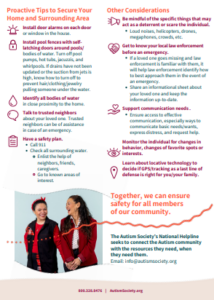
If you’re unable to find a suitable swimming program near your home, then by all means, get in the water with your autistic child and do whatever it takes to teach them how to tread water, to dog paddle to the pool’s edge, and to “swim” on their back or move while sideways (which for some kids is easier than traditional swimming).
 Lorra Garrick is a former personal trainer certified by the American Council on Exercise. At Bally Total Fitness, where she was also a group fitness instructor, she trained clients of all ages for fat loss and maintaining it, muscle and strength building, fitness, and improved cardiovascular and overall health. She has a clinical diagnosis of ASD.
Lorra Garrick is a former personal trainer certified by the American Council on Exercise. At Bally Total Fitness, where she was also a group fitness instructor, she trained clients of all ages for fat loss and maintaining it, muscle and strength building, fitness, and improved cardiovascular and overall health. She has a clinical diagnosis of ASD.
.


